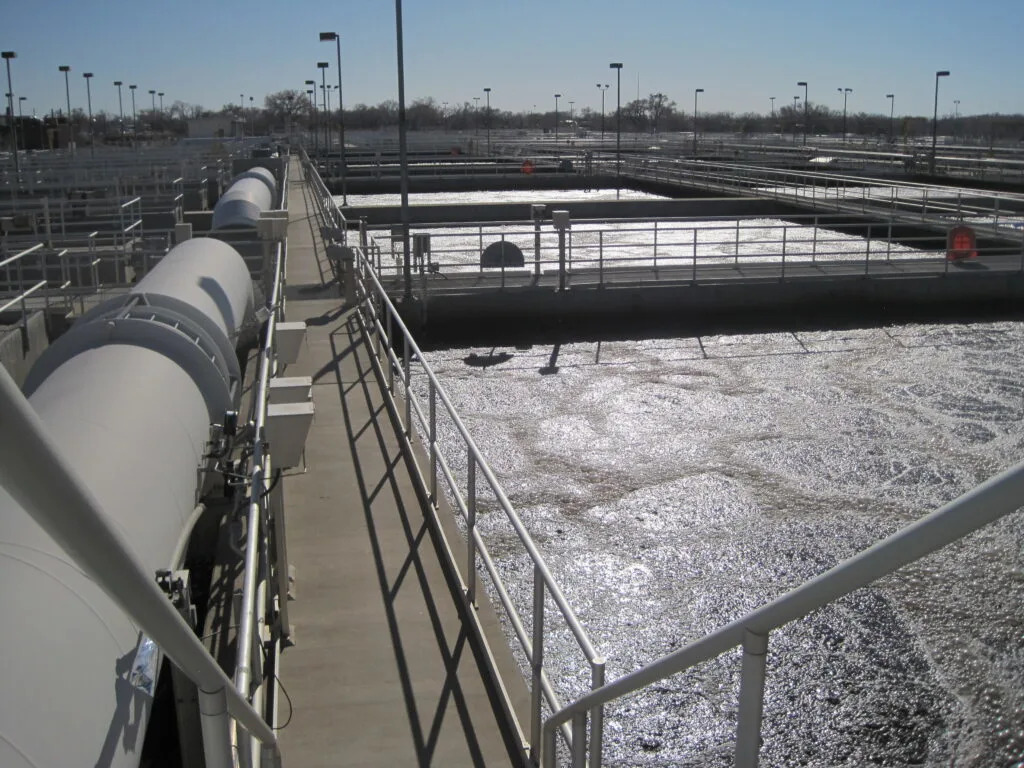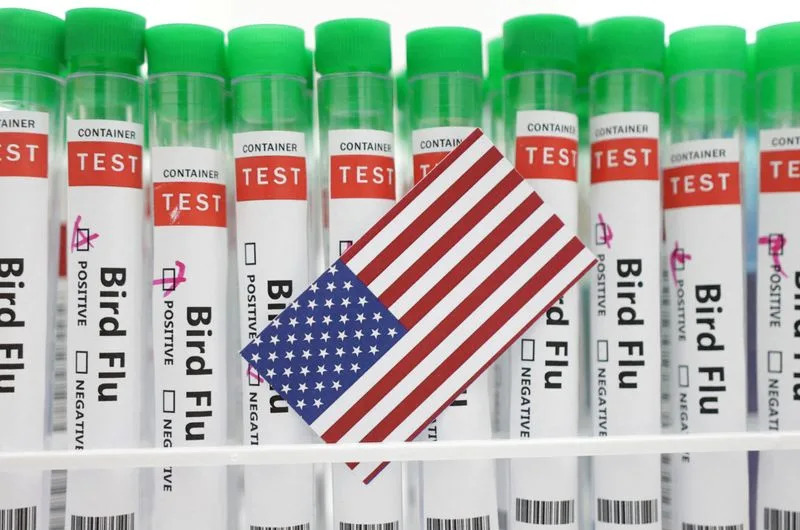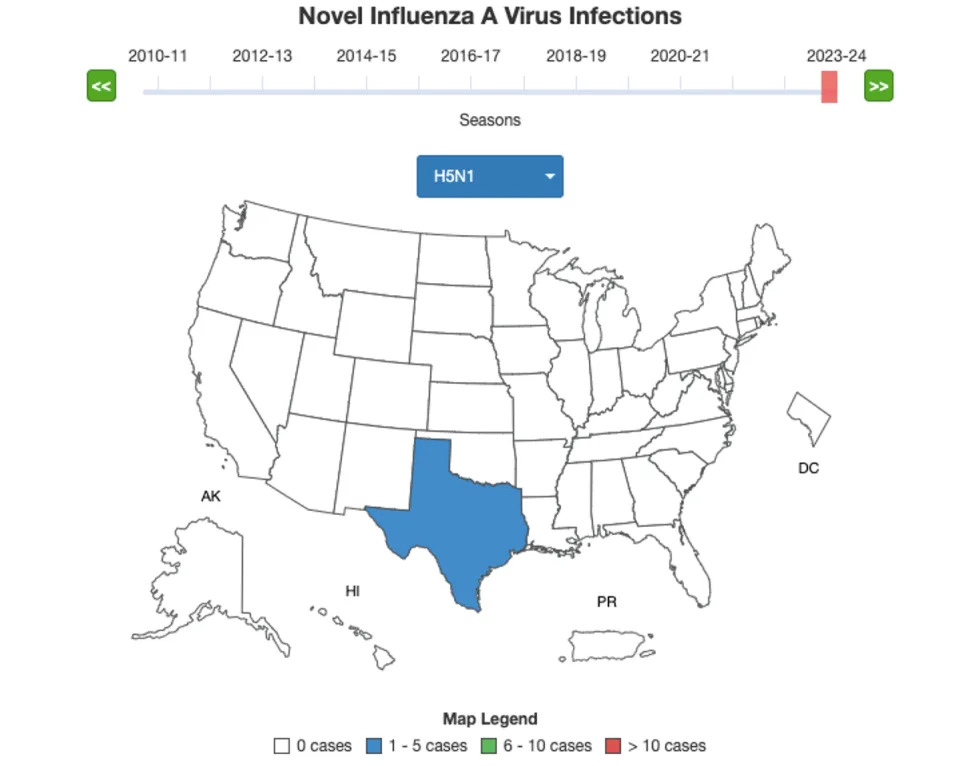Riley Griffin and Jessica Nix
Thu, May 23, 2024


(Bloomberg) -- A Michigan farmworker who tested positive for bird flu is just the second person to have been infected since an outbreak in US cattle appeared in March. Surveillance of sewage suggests the virus may be more widespread among dairy cows than reported, raising workers’ risk.
Academic and industry-run labs have been leading the way toward more nuanced and complete information about the H5N1 virus’s range by analyzing wastewater. They found bird flu in sewage samples collected before the virus had been identified in US cows. They’re seeing signs in cities that are far from infected cattle herds. And they’re already giving the Centers for Disease Control and Prevention better information about where to focus its efforts.
While rarely seen in humans, the H5N1 strain has considered a pandemic threat for decades because it often jumps between species, sometimes causing lethal disease in people. As farmers resist testing, the US needs to expand its monitoring of sewage, particularly in rural areas around farms where the pathogen may be spreading, said Paul Friedrichs, director of the White House Office of Pandemic Preparedness and Response Policy.
“We’re going to need to do more work as a nation on how do we better structure wastewater surveillance in areas that don’t have or aren’t on a municipal wastewater system,” Friedrichs, a retired major general and joint staff surgeon at the Pentagon, said in an interview. “That’s the gap we’re going to have to figure out how to bridge.”
Concerned about lost income, dairy farms have resisted efforts to test cows and workers, potentially concealing the true scope of the virus’s spread.
Viruses are often excreted in feces, which prompted scientists to turn to wastewater early in the pandemic to track Covid’s spread, hunt for new trends and spot the emergence of concerning variants. Although it’s unable to show whether the source is infected humans, animals or products like milk, wastewater surveillance paints a more complete picture of where pathogens are emerging across broad geographic areas.
In Texas, for example, 19 out of 23 wastewater sites were found to contain traces of the virus between early March and the end of April, according to Texas Wastewater Environmental Biomonitoring. Meanwhile, the state has some 400 dairy farms, and just 14 herds have tested positive for bird flu to date, according to the US Department of Agriculture.
Other Biden administration officials, who asked not to be named while describing the federal response, said they’re worried about the time it took the government to first spot the outbreak in cattle, which likely began in late 2023 after contact with sick migratory birds. That monthslong delay shows the limitations of US pandemic preparedness efforts and a disjointed public-health system, the officials said.
Friedrichs said the US should seek the help of additional wastewater experts and operations to develop “a more robust national picture.”
Tracking Technology
Specialists in the field include Verily, the Alphabet Inc. life-sciences unit that began working with Stanford University and Emory University to monitor wastewater during the pandemic. With funding from Google co-founder Sergey Brin and others, Verily expanded testing for more than dozen viruses to 190 sites, and in October, it was tapped to support the CDC’s National Wastewater Surveillance System that includes hundreds more facilities.
Since it was first detected in US cattle in March, bird flu has been found in 52 herds from nine states. However, before the first reported case, Verily’s top wastewater scientist Bradley White noticed a strange trend: influenza A, a viral category that includes H5N1, was spiking in parts of the country. White had a hunch the surge was driven by bird flu, and developed a test for genetic signatures typical of H5N1 and its H5 cousins.
Using the assay to look back through old wastewater samples, White found an H5 virus had been present in Amarillo, Texas, as early as February — weeks before the White House was first alerted of the emerging outbreak. That shows the potential for wastewater surveillance as an early warning signal for bird flu, White said.
It appears bird flu has “run its course” in Texas, he said, as overall influenza A levels appear to be declining in the state. Verily announced this week that it had expanded its search for H5 markers to all 190 sites in an effort to better track the outbreak.
Recognizing the need for more monitoring, the CDC is also putting an additional $3 million into wastewater analysis, part of a $93 million package aimed at improving H5N1 surveillance. The agency said in 2022 that it had put more than $100 million toward testing for Covid in wastewater, and expected the funds to last for an additional three years. In March, it made a fiscal 2025 budget request for an additional $20 million to test sewage for emerging diseases.
The CDC is also starting a project to check sewage at 10 new locations close to livestock, and launching a study that would help distinguish whether human or animals were responsible for virus detected in wastewater. Last week, it launched an online wastewater data dashboard tracking influenza A. Between late April and mid-May, only two of six Michigan-based wastewater sites on the CDC dashboard showed moderate levels of influenza A.
Potential Mutations
Concern about H5N1 soared about two decades ago when a strain of the virus began running rampant in poultry, occasionally infecting people. Health officials worldwide began looking for signs of human-to-human transmission that might have signaled a potential pandemic before the outbreak finally subsided. While some human cases have been severe, even deadly, the two farmworkers infected in the recent US outbreak both had mild symptoms and recovered. No transmission between people has been seen.
H5N1 infections in cows can lead to decreased milk production and may raise their risk of other conditions, like pneumonia. Pasteurization kills the virus, and there’s no evidence of danger from commercial milk, cheese or ice cream.
Health officials are particularly concerned about tracking the virus on dairy farms where infected cows frequently come in contact with workers, and mutated viruses may find opportunities to infect humans. The dangers the virus has shown in the past raises the stakes for wastewater monitoring.
“The risk is the longer this outbreak continues, the more opportunities there may be for a spillover jump from an animal species to a human,” said Al Ozonoff, an infectious disease scientist at Boston Children’s Hospital and Harvard Medical School. The next event experts worry about is, he said is “some viral evolution which creates an opportunity for human-to-human transmission.”
--With assistance from Ilena Peng.
Most Read from Bloomberg Businessweek










